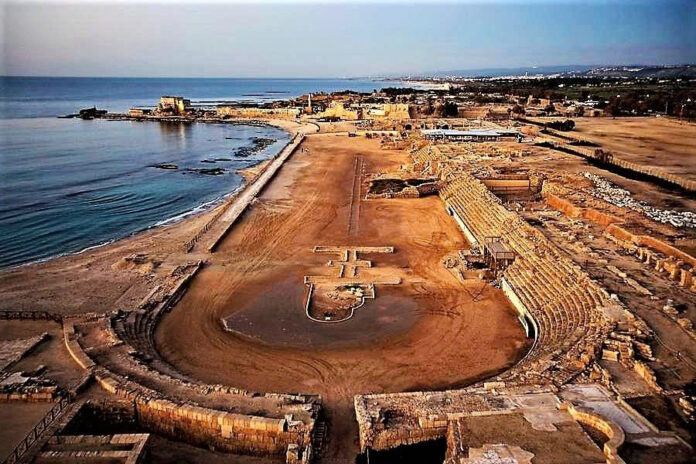The Magnificent Arena by the Sea
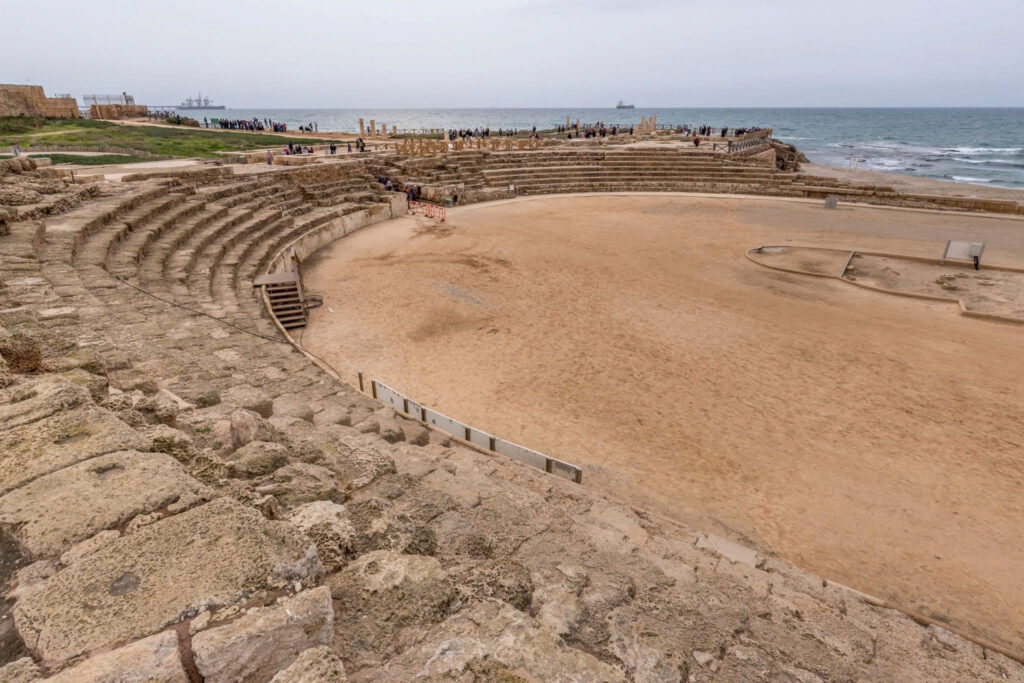
Imagine standing on weathered stone steps, gazing across the remnants of an ancient colosseum where the Mediterranean waves crash mere yards away. This is Caesarea’s hippodrome, a testament to Roman engineering that once thundered with the hooves of racing chariots and the roar of 13,000 spectators. Stretching 400 meters in length and 50 meters in width, this grand arena evokes memories of Hollywood’s epic chariot scenes, yet its reality was far more complex and tragic.
Herod’s Vision: A Roman Jewel in Judaea
The Builder’s Ambition
King Herod, the ambitious half-Jewish ruler appointed by Rome, envisioned Caesarea as his crowning achievement. While Jerusalem remained the spiritual heart with its priests and scholars, Caesarea was designed to be the commercial powerhouse of Judaea. This wasn’t merely another city—it was Herod’s love letter to Roman civilization, complete with an advanced harbor, a massive Temple dedicated to Augustus, and a theater that still hosts performances today.
The Grand Opening
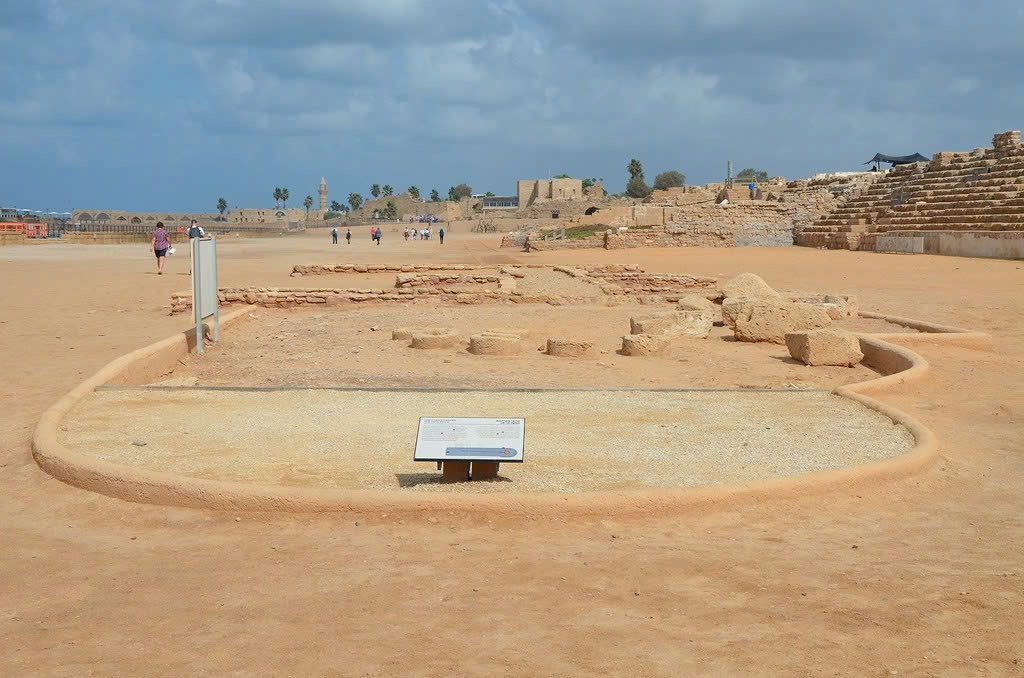
In 10 BCE, Herod inaugurated his masterpiece with a spectacular sports festival designed to rival the Olympic Games. The hippodrome served as the centerpiece of this celebration, symbolizing the fusion of Roman culture with the ancient land of Judaea.
When Worlds Collide: The Stage for Conflict
Pilate’s Confrontation
The year 26 CE marked a turning point when Pontius Pilate arrived as prefect of Judaea. His decision to bring imperial statues to Jerusalem sparked outrage among the Jewish population. The confrontation that followed unfolded dramatically within the very walls of Caesarea’s hippodrome.
As recorded by the historian Josephus, Pilate orchestrated a theatrical display of power. He summoned the Jewish protesters to the stadium under the pretense of addressing their concerns, only to reveal soldiers surrounding them three rows deep. When threatened with death unless they accepted Caesar’s images, the Jews made a choice that stunned even their oppressor—they threw themselves to the ground, baring their necks, declaring their willingness to die rather than violate their religious principles.
This act of collective courage so impressed Pilate that he ordered the immediate removal of the statues from Jerusalem.
The Spark of Rebellion
Four decades later, escalating tensions between Jewish and pagan communities in Caesarea would ignite the catastrophic Jewish Rebellion of 66 CE, setting the stage for the destruction of the Second Temple and the diaspora that followed.
The Darkest Chapter: Martyrdom in the Arena
The Ten Sacred Souls
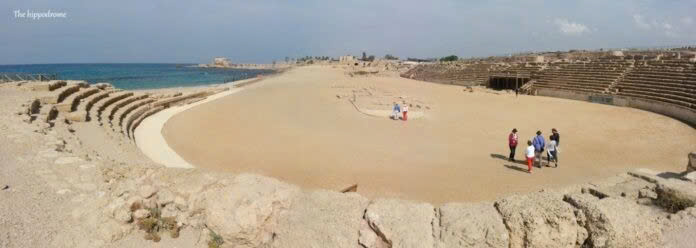
Perhaps no event in the hippodrome’s history cuts deeper into Jewish memory than the public execution of the Aseret Harugei Malchut—the Ten Martyrs of the Kingdom. During the 2nd century CE, Rome’s greatest rabbis were tortured to death in this very arena for the “crime” of teaching Torah, their suffering transformed into entertainment for the masses.
This tragedy is commemorated annually during Yom Kippur services through the haunting prayer “Eleh Ezkerah” (These I Will Remember), which begins with the soul-stirring words: “These I will remember as I pour out my soul.”
Video
Legacy Written in Stone and Song
Enduring Presence
Despite centuries of conflict and persecution, the Jewish community of Caesarea persevered, maintaining an uneasy coexistence with their neighbors for over a millennium after the city’s founding.
A Modern Echo

The ruins continue to inspire. Hannah Senesh, a young woman from nearby Sdot Yam, walked among these ancient stones and penned her beautiful poem “Walking to Caesarea”:
My God, My God, let there never be an end
To the sand and the sea
The rush of the waters
The thunder of heaven
The prayer of man
Reflections on the Ruins
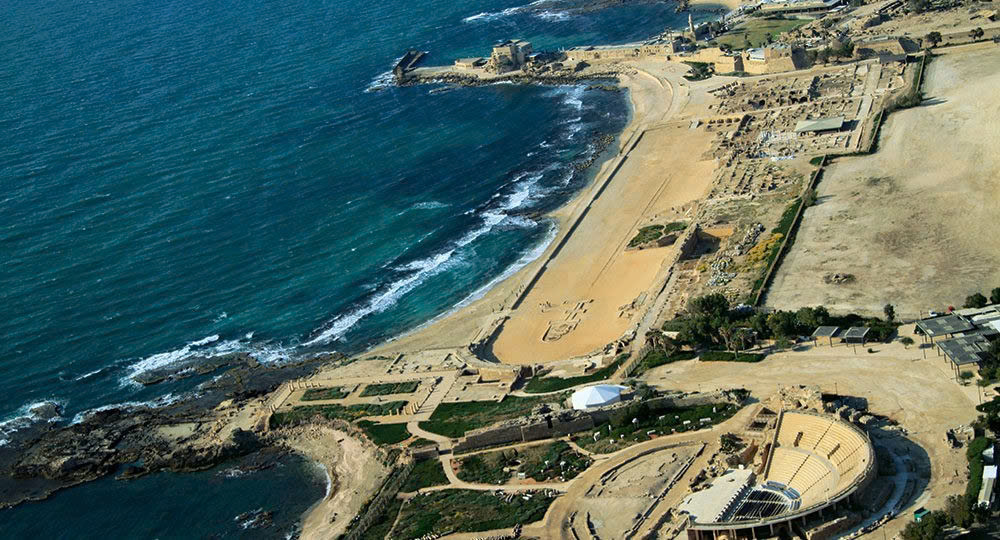
Today, as Mediterranean waves continue their eternal dance against the shore—the same waters that connect this ancient site to Rome—visitors can feel the weight of history in every stone. The hippodrome of Caesarea stands as a powerful reminder of the complex relationship between power and faith, between the grandeur of human achievement and the moral choices that define our humanity.
Here, where Roman spectacle once dominated, we find enduring lessons about courage, conviction, and the price of standing for one’s beliefs. The arena that witnessed both the heights of entertainment and the depths of persecution now serves as a silent testament to the eternal struggle between might and right, between earthly power and spiritual truth.
